Warriors from the column of Marcus Aurelius
Marcus Aurelius, Roman emperor
Ancient civilization. Interest in ancient civilization has always been very high. The achievements of civilizations that existed before it, that is, the Bronze Age, may even be comparable with it, but they did not leave written monuments for us. Her creations do not speak to them, “all the evidence”, as modern investigators would say, is exclusively circumstantial. Not so with antique history... Her monuments in stone, ceramics and metal, in gold and silver, of lead and copper, and even fragile glass have come down to us; we also have written texts. Made on stones and clay, papyrus and parchment. They all talk about different things, and there are many of them. For example, the diaries of the Roman emperor Marcus Aurelius have come down to us. And their value is so great that it was said: "If they were the handbook of every official and every ruler, the world would be different!" In addition, the written sources of this time supplement the found and preserved artifacts, and they begin to talk to us, that is, their evidence is much more significant than the silent megaliths of previous eras. However, in addition to many texts, statues and bas-reliefs have survived to our time, looking at which we can personally imagine, let's say, the appearance of the same Roman soldiers during the war of Rome with the tribes of barbaric Marcomanians. The monument in question is called the column of Marcus Aurelius. And that's just about her today and we will tell you.
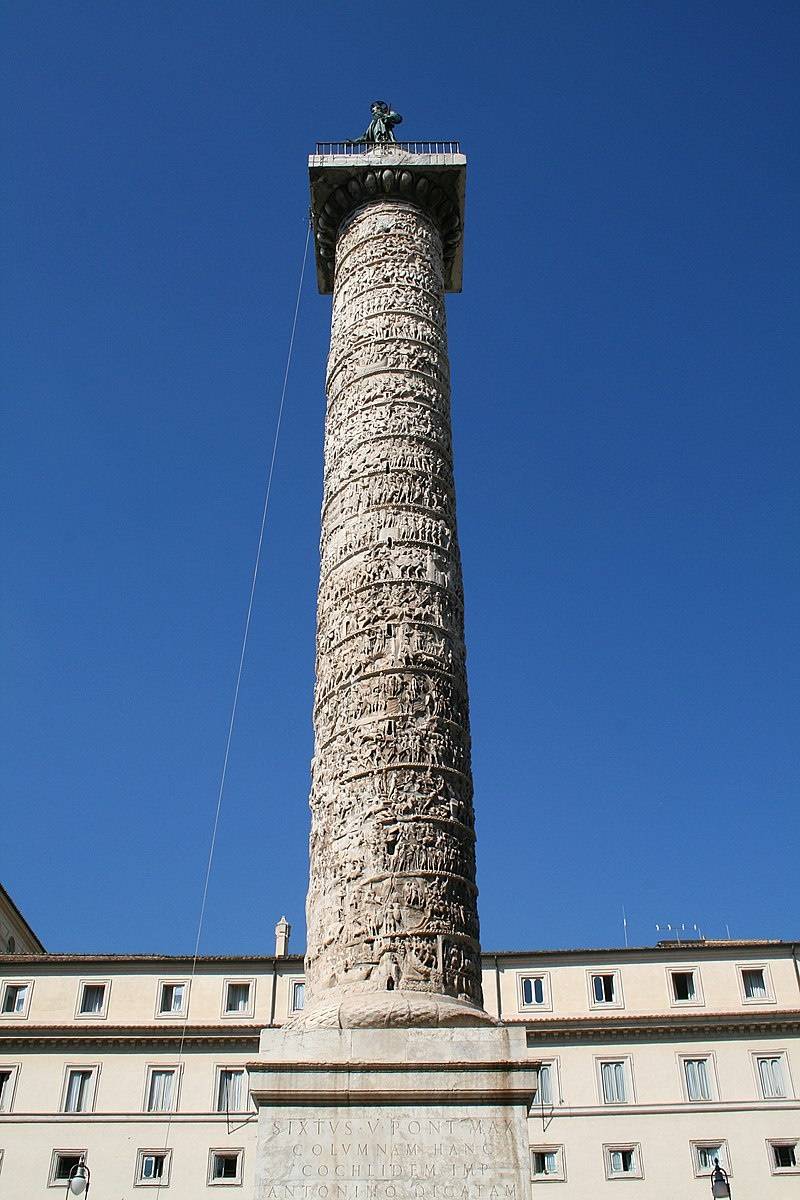
Let's start with what kind of monument it is. where is it, what it is. So, the Column of Marcus Aurelius is a monumental column of the Doric type that stands in Rome on the Piazza Colonna, and this square is named after her. It was built between 176 and 192 years as a monument to the events of the Markoman war. Its prototype was the famous column of the Emperor Trajan. It is known that Marcus Aurelius lived in 121-180 AD, and ruled from 161 to 180 AD. That is, they began to build it during the life of the emperor and, of course, with his approval, but finished already 12 years after his death. And this is not surprising, since the work on this monument required a lot of effort, time and expense. The fact is that the entire surface of the column, as in the case of Trajan's column, is covered with spiraling bas-reliefs telling about the events of the Marcomanian war. And making them all was undoubtedly a rather difficult and lengthy affair.

The height of the column is 29,6 m, the height of the pedestal is 10 m. The total height of this monument was 41,95 m, but over time 3 meters from its base after the restoration carried out in 1589 turned out to be below the surface of the earth. The column's shaft is made of blocks of Carrara marble (28 blocks) with a diameter of 3,7 meters. Just like Trajan's Column, Marcus Aurelius's Column is hollow inside and there is a spiral staircase with about 190-200 steps leading to its top. On a square platform there once stood a sculpture of Marcus Aurelius himself. Staircase lighting is provided through small vertical windows.
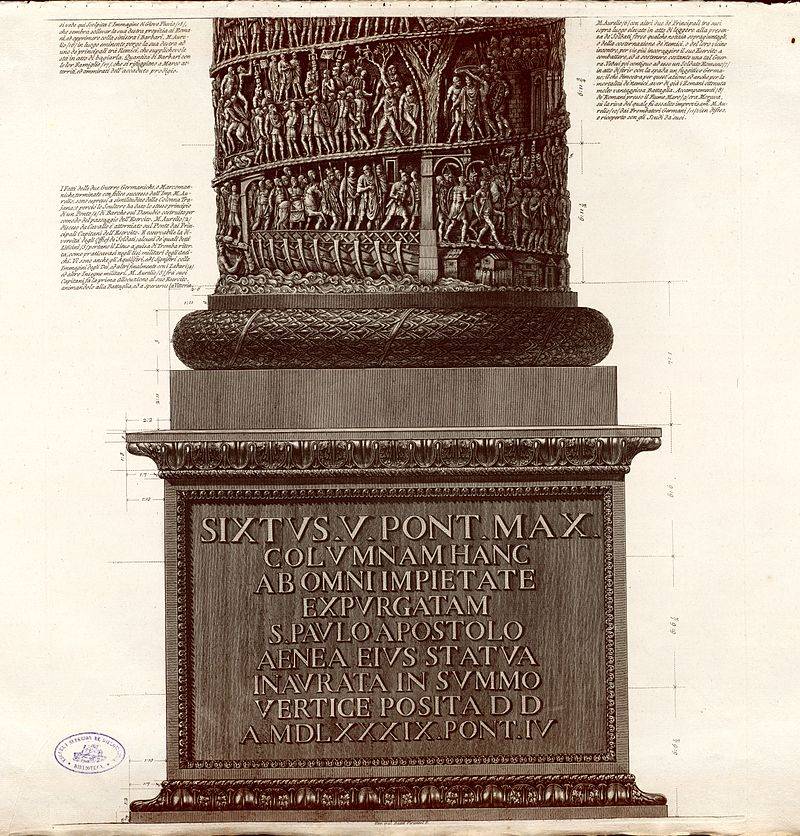
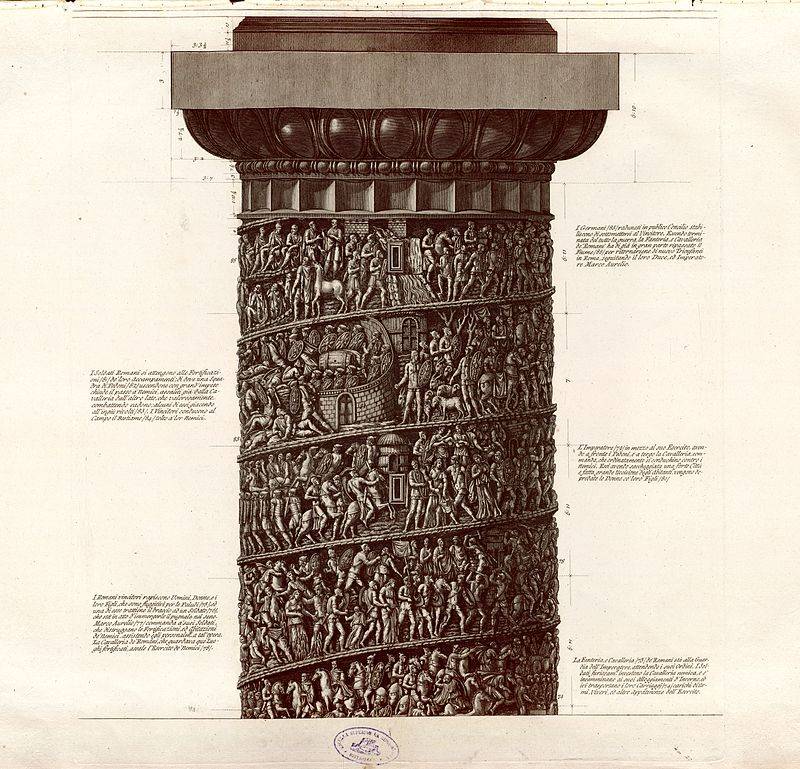
But the most important thing, of course, is its bas-reliefs. Moreover, everything that is depicted on them is very noticeably different from the reliefs on Trajan's column. Differs primarily in much greater expressiveness. The play of light and shadow on the surface of the column of Marcus Aurelius is much more noticeable, since the stone carving here is made deeper than on Trajan's column, where the figures are flatter. In addition, here the heads of the figures are slightly enlarged, which, apparently, was originally conceived for greater accuracy in conveying facial expressions. But at the same time, we see at the same time a decrease in the quality level of elaboration of clothing details, and weapon characters. True, the sculptors can be understood, because there are literally thousands of figures depicted on the column!
The preservation of the figures on this column is somewhat worse than on Trajan's column, but since the carving here is deeper, that is, it is essentially a high relief, they make a much stronger impression. That is, Trajan's Column seems smoother, and Aurelius's Column - more embossed, and so it is in reality.
Interestingly, in the Middle Ages, climbing the stairs to the top of the column was such a popular pastime that the right to receive an entrance fee for it was put up for auction every year in Rome. Over time, namely by the 1589th century, the statue of Marcus Aurelius was already lost, and in XNUMX Pope Sixtus V decided to restore the column. This was entrusted to the architect Domenico Fontana, who decided to erect a sculpture of the Apostle Paul on it, smeared over the destroyed reliefs (about which the corresponding inscription was made on the pedestal), but in it he made a mistake and called the monument "Antoninus Pius's Column".
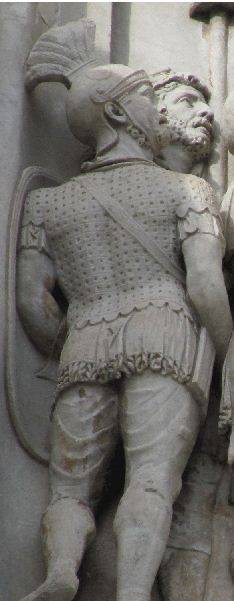
By the way, the difference between these two columns, Trajan and Aurelius, is only eighty years, but not only the change of relief to high relief is striking, but also the general artistic manner. If you look closely, you can see that the scenes of war on the column of Marcus Aurelius are shown less pretentiously than on the column of Trajan. Experts believe that the style of the column of Marcus Aurelius is closer to the famous Arch of Constantine the Great than, again, to the column of Trajan. Amusing can be considered the fact that heroizing the Roman legions, now consisting of mercenaries, and not only the indigenous inhabitants of Rome, at the time of Marcus Aurelius ceased, which was reflected in their image on the column. That is, it is believed that both the Arch of Constantine and the column of Marcus Aurelius show us the transition from ancient art, heroizing its characters, to art that is more simple, realistic, Christian. And this was, of course, still a beginning, which later received its full development.
Well, as for the battle scenes, we can say the following about them: in the lower part of the column we see the battles of the Romans with the Germanic tribes, and on the upper ones they are already fighting against the Sarmatians. Again, it is obvious that in the image of the soldiers of the Roman legions, which already consisted mainly of mercenaries, their heroization began to be absent during the time of Marcus Aurelius. Moreover, the sculptors seem to sympathize even more with the beaten Germans: those with the most primitive weapons in their hands resist the legionnaires, chained in plate armor and chain mail, and they burn their houses and fields and take women into slavery. In general, we do not see robbers in the Germans and Sarmatians, but the Romans appear as such on this column.
Separate images from the column were repeatedly used as illustrations for books on the history of Ancient Rome. But here you should keep in mind the time of creation of this monument: the end of the II century AD, and, accordingly, only about the warriors of this time, he can tell us!
Already in the 1613th century, exceptionally accurate sketches were made from the bas-reliefs of the column, the authors of which were the famous painter and antiquarian Bellori, Giovanni Pietro (1696-1635) and Bartoli, Pietro Santi (1700-1704). There is a well-known book "Column of Marcus Aurelius, Emperor of Rome" published by these authors in XNUMX, images from which have now been digitized by Emory University and the Robert W. Woodruff Library, thanks to which they can now be used without actually referring to this old edition.
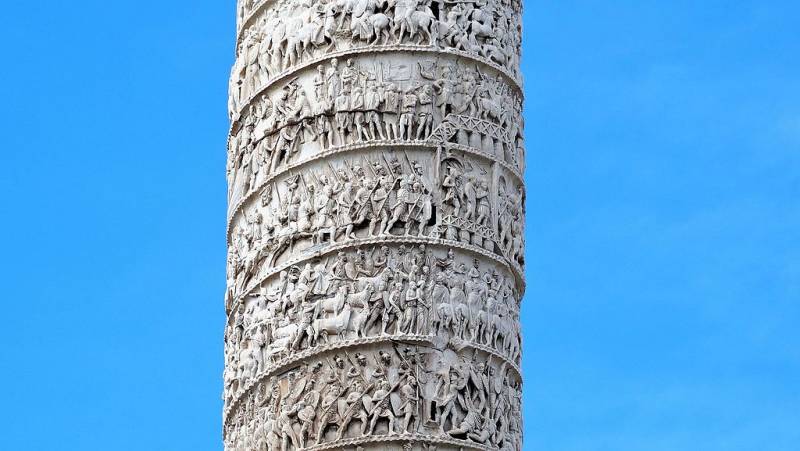
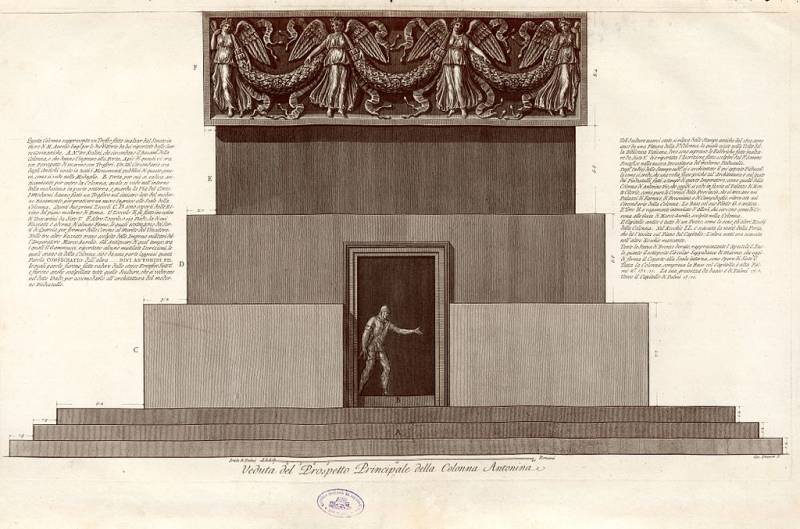
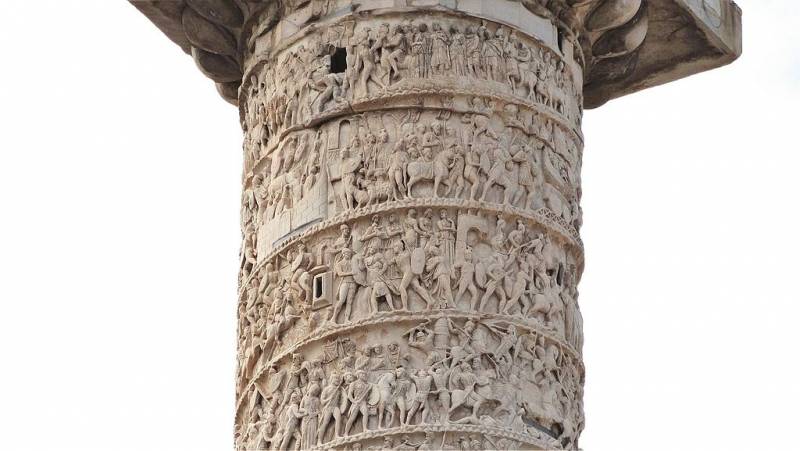
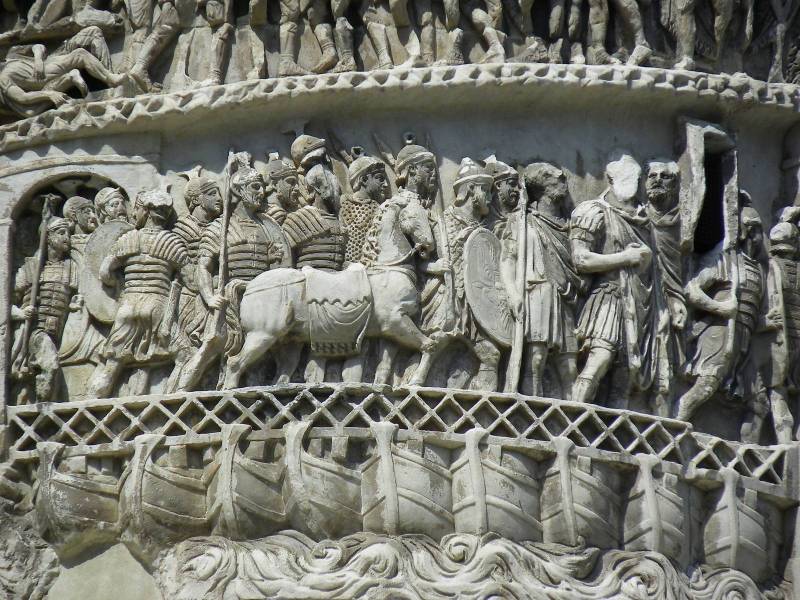
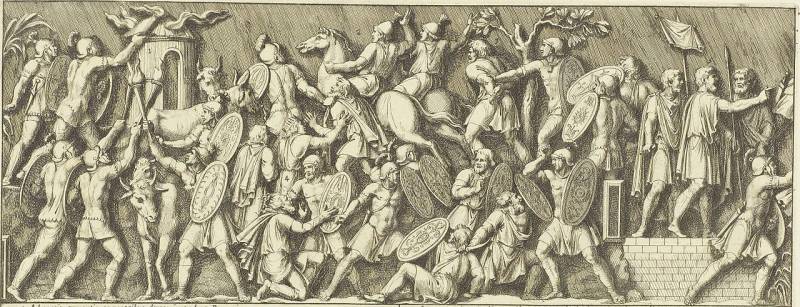
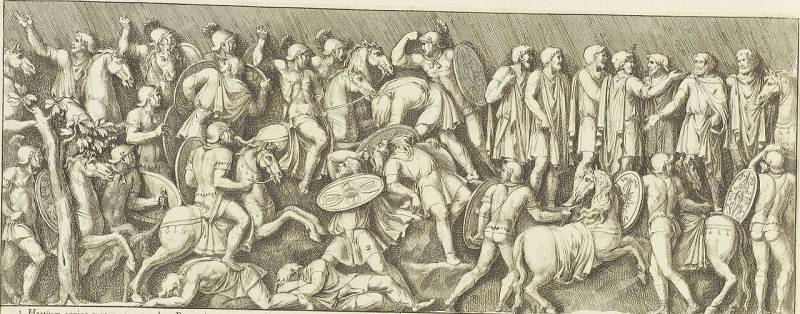
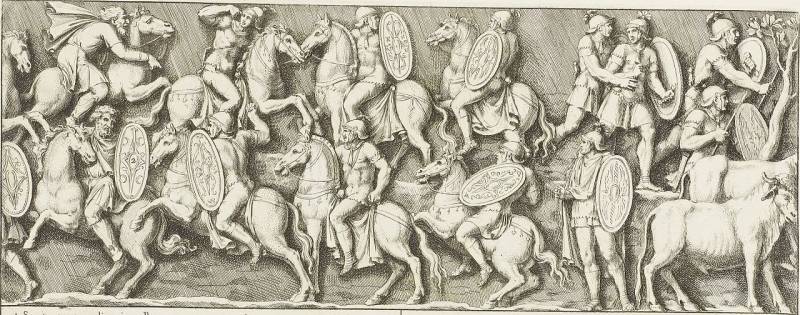
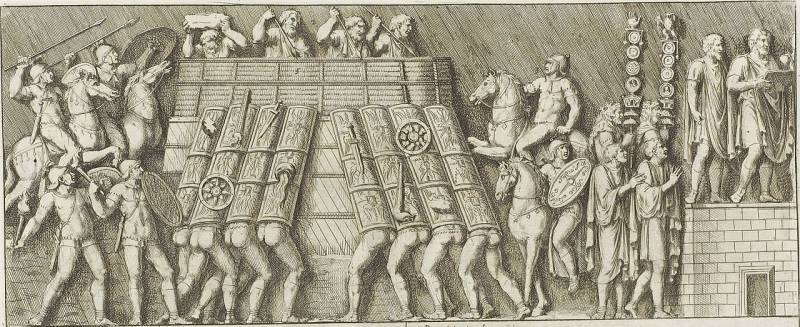
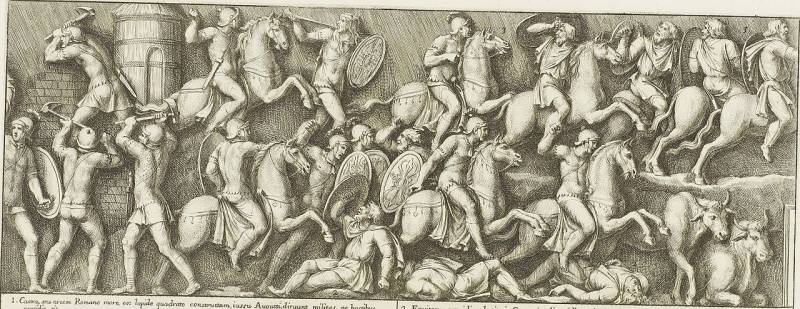
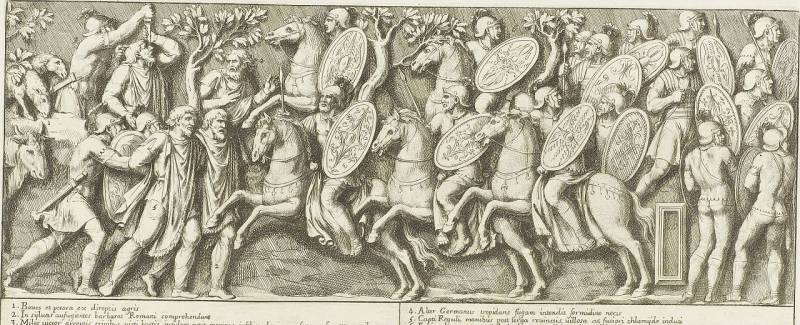
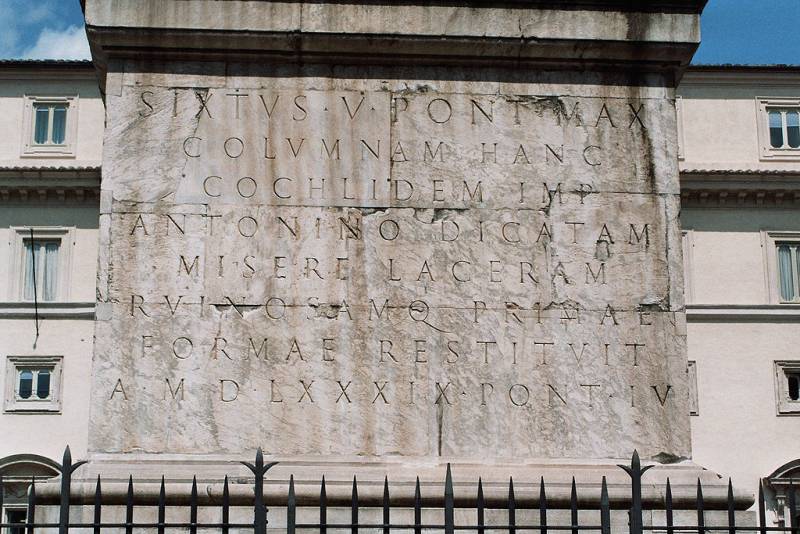
Information